.01
Ġgantija Temples
At more than 5,000 years old, the Ġgantija temples on Gozo are the oldest temples in the Maltese Islands, predating the pyramids of Egypt during the old kingdom and Stonehenge. These remarkably well-preserved temples are located in the outskirts of the beautiful village of Xagħra and consist of two temples dating back between 3,600 and 3,200 years BC. The Ġgantija temples are a UNESCO world Heritage Site.
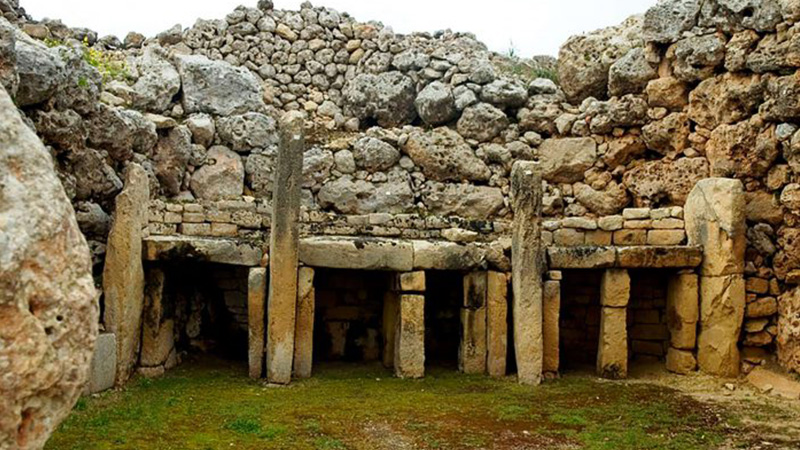
.01
Ġgantija Temples
At more than 5,000 years old, the Ġgantija temples on Gozo are the oldest temples in the Maltese Islands, predating the pyramids of Egypt during the old kingdom and Stonehenge. These remarkably well-preserved temples are located in the outskirts of the beautiful village of Xagħra and consist of two temples dating back between 3,600 and 3,200 years BC. The Ġgantija temples are a UNESCO world Heritage Site.
.02
Tarxien Temples
important evidence of ancient cultures which once inhabited Malta. The temples site, now surrounded by urbanisation, was discovered by a farmer in 1915. In one of the temples a huge statue of a reclining woman was found (the original is now housed in the National Museum of Archaeology in Valletta) which is one of the world’s earliest known representation of a deity. The statue is considered to be that of a fertility goddess. There are four linked temples with massive stone blocks up to 3 metres by 1 metre by 1 metre in size.

.02
Tarxien Temples
important evidence of ancient cultures which once inhabited Malta. The temples site, now surrounded by urbanisation, was discovered by a farmer in 1915. In one of the temples a huge statue of a reclining woman was found (the original is now housed in the National Museum of Archaeology in Valletta) which is one of the world’s earliest known representation of a deity. The statue is considered to be that of a fertility goddess. There are four linked temples with massive stone blocks up to 3 metres by 1 metre by 1 metre in size.
.03
Hagar Qim Temples
UNESCO world heritage listed Haġar Qim is a marvel of ancient history and engineering located along the strikingly stark landscape of the south-east coastline. Built on a high hill overlooking the blue Mediterranean and the islet of Fifla, Hagar Qim and its sister temple Mnajdra (500m down the hill and closer to the sea), have the most spectacular location of any temples on the islands. They were constructed during what is known as the Ggantija temple phase, which include not only the oldest temples in Malta, but also the oldest free standing, man-made, structures in the world. The temples hold mysteries that are 5,500 years old.

.03
Hagar Qim Temples
UNESCO world heritage listed Haġar Qim is a marvel of ancient history and engineering located along the strikingly stark landscape of the south-east coastline. Built on a high hill overlooking the blue Mediterranean and the islet of Fifla, Hagar Qim and its sister temple Mnajdra (500m down the hill and closer to the sea), have the most spectacular location of any temples on the islands. They were constructed during what is known as the Ggantija temple phase, which include not only the oldest temples in Malta, but also the oldest free standing, man-made, structures in the world. The temples hold mysteries that are 5,500 years old.
.04
St. John's Co-Cathedral
St. John’s Co-Cathedral is unparalleled in its historic significance to Malta. Apart from its place among the most magnificent baroque churches in the world, St. John’s Co-Cathedral is also an architectural metaphor for the Order of the Knights of St. John, who built it between 1573 and 1578. The simple façade reflects the Knights’ military pragmatism, while the gilded vaults, painted ceilings, marble floors and general baroque exuberance of its lavish interior, reveal the sophistication, power and wealth of the Order. It was raised to a status equal to that of St Paul’s Cathedral in Mdina, the official seat of the Archbishop of Malta, by a papal decree of 1816, hence the term ‘co-cathedral’.
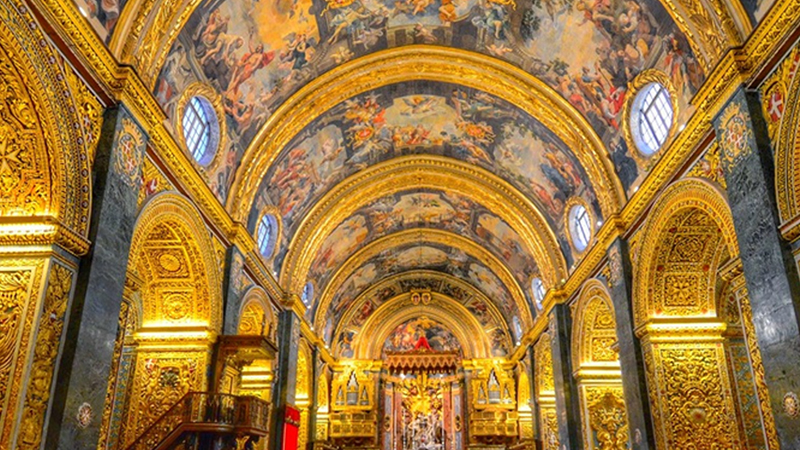
.04
St. John's Co-Cathedral
St. John’s Co-Cathedral is unparalleled in its historic significance to Malta. Apart from its place among the most magnificent baroque churches in the world, St. John’s Co-Cathedral is also an architectural metaphor for the Order of the Knights of St. John, who built it between 1573 and 1578. The simple façade reflects the Knights’ military pragmatism, while the gilded vaults, painted ceilings, marble floors and general baroque exuberance of its lavish interior, reveal the sophistication, power and wealth of the Order. It was raised to a status equal to that of St Paul’s Cathedral in Mdina, the official seat of the Archbishop of Malta, by a papal decree of 1816, hence the term ‘co-cathedral’.
.05
Hal Saflieni Hypogeum
The Hypogeum is Malta’s unique underground temple complex, discovered by chance in 1902 when builders were preparing a building site in Paola. Covering some 500 sq metres it comprises a labyrinth of halls, corridors and chambers on three levels cut from the limestone around 4,000 to 5,000 years ago. This was a place of both ancient worship and burial and at the lowest level of the complex a chamber was found containing the remains of around 7,000 bodies. One chamber, known as the Oracle Chamber, allows a strange phenomenon – it will magnify male voices around the complex but not female voices.
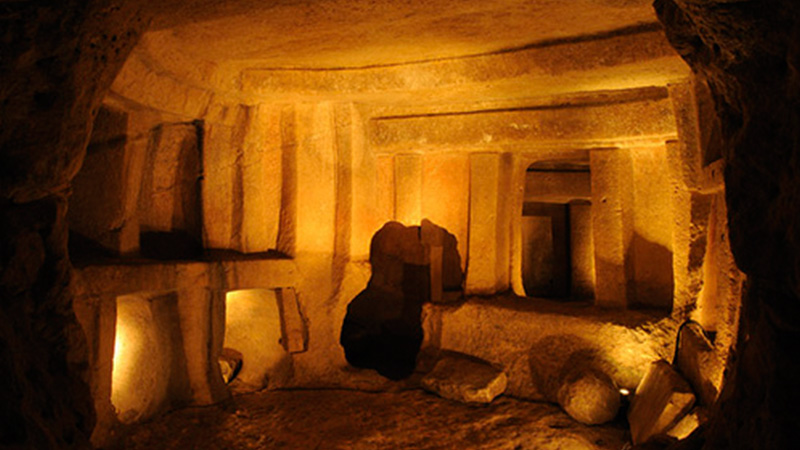
.05
Hal Saflieni Hypogeum
The Hypogeum is Malta’s unique underground temple complex, discovered by chance in 1902 when builders were preparing a building site in Paola. Covering some 500 sq metres it comprises a labyrinth of halls, corridors and chambers on three levels cut from the limestone around 4,000 to 5,000 years ago. This was a place of both ancient worship and burial and at the lowest level of the complex a chamber was found containing the remains of around 7,000 bodies. One chamber, known as the Oracle Chamber, allows a strange phenomenon – it will magnify male voices around the complex but not female voices.
.06
St. Paul's Cathedral
St. Paul’s Cathedral is a Roman Catholic cathedral in the city of Mdina. It is built on the site where governor Publius was reported to have met Saint Paul following his shipwreck off the Maltese coast. The old church was modified and enlarged several times. The building we can see today was designed by the architect Lorenzo Gafa and it was built between 1697 and 1702 to replace a ruined Norman cathedral destroyed in 1693.
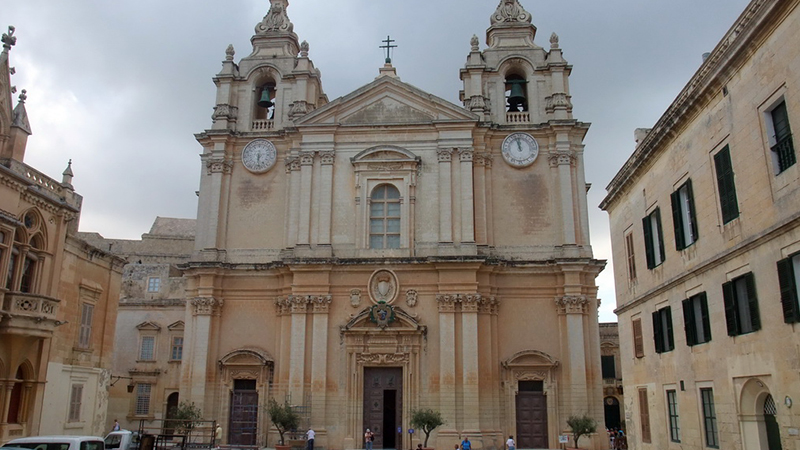
.06
St. Paul's Cathedral
St. Paul’s Cathedral is a Roman Catholic cathedral in the city of Mdina. It is built on the site where governor Publius was reported to have met Saint Paul following his shipwreck off the Maltese coast. The old church was modified and enlarged several times. The building we can see today was designed by the architect Lorenzo Gafa and it was built between 1697 and 1702 to replace a ruined Norman cathedral destroyed in 1693.
.07
Grand Master's Palace
Dominating Palace Square, the Grandmaster’s Palace was one of the first buildings to be built in Valletta in 1571. The original Palazzo was designed by Gelormu Cassar but successive Grandmasters enlarged and developed the building as they deemed fit to use it as their official residence.
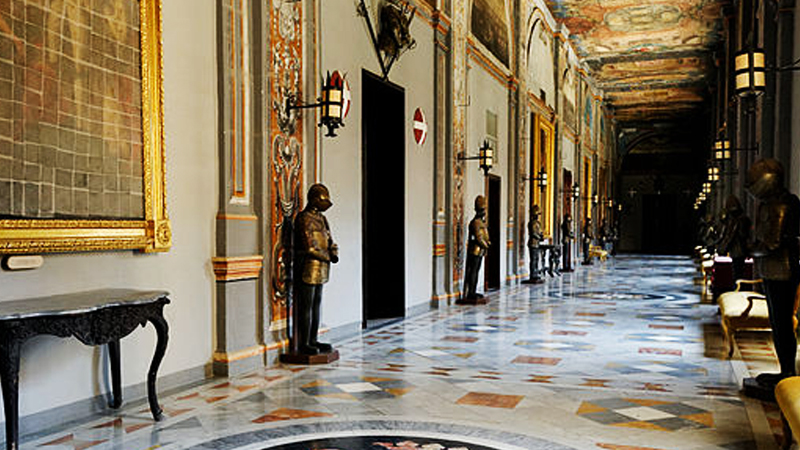
.07
Grand Master's Palace
Dominating Palace Square, the Grandmaster’s Palace was one of the first buildings to be built in Valletta in 1571. The original Palazzo was designed by Gelormu Cassar but successive Grandmasters enlarged and developed the building as they deemed fit to use it as their official residence.
.08
Ghar Dalam
Għar Dalam means ‘cave of darkness’ in Maltese. The cave is 145-metre cavity of which the first 50 metres publicly accessible. The animal bones found within are evident proof that Malta was once linked to Sicily and to mainland Europe by a land bridge. A huge number and variety of paleontological treasures have been unearthed from Għar Dalam, including the remains of dwarf elephants and hippopotami. These animals were trapped in Malta during the ice age when the sea-level rose to isolate the country from Sicily. The marooned animals subsequently evolved to smaller size in order to adapt themselves to a more limited food-supply. The cave has also surrendered the remains of bears, wolves, micro-mammals and giant flightless swans.
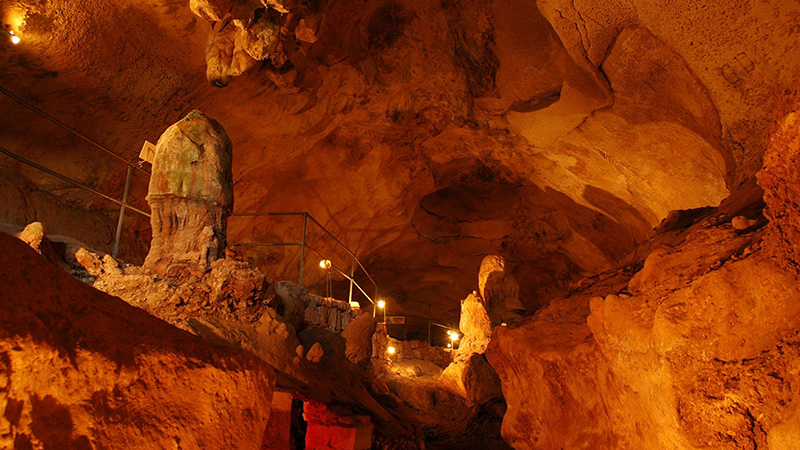
.08
Ghar Dalam
Għar Dalam means ‘cave of darkness’ in Maltese. The cave is 145-metre cavity of which the first 50 metres publicly accessible. The animal bones found within are evident proof that Malta was once linked to Sicily and to mainland Europe by a land bridge. A huge number and variety of paleontological treasures have been unearthed from Għar Dalam, including the remains of dwarf elephants and hippopotami. These animals were trapped in Malta during the ice age when the sea-level rose to isolate the country from Sicily. The marooned animals subsequently evolved to smaller size in order to adapt themselves to a more limited food-supply. The cave has also surrendered the remains of bears, wolves, micro-mammals and giant flightless swans.
.09
St. Paul's Catacombs in Rabat
St Paul’s catacombs are a must-see for any ancient history enthusiast. They take their name from their proximity to St. Paul’s church and grotto in Rabat, where the apostle is believed to have preached during his sojourn in Malta. This underground labyrinth sepulchre with hundreds of tombs dates from the 3rd century and make up one of the earliest archaeological evidence of Christianity in Malta. It is one of the largest hypogea that covers an area of over 2,000 square metres having a large hall divided into two chambers.
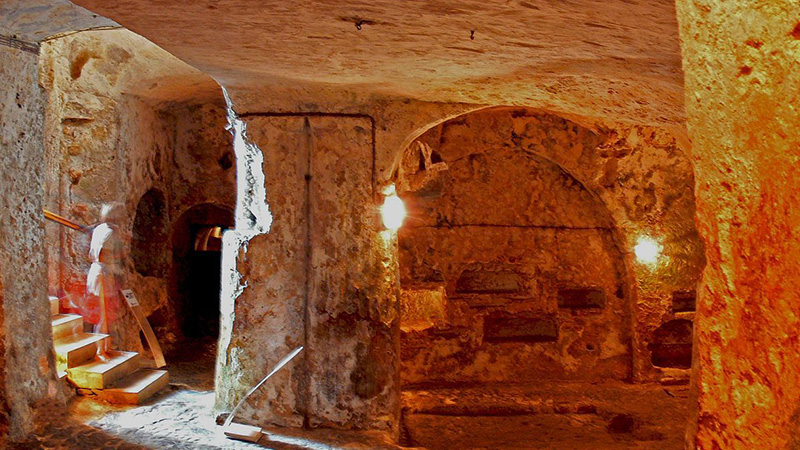
.09
St. Paul's Catacombs in Rabat
St Paul’s catacombs are a must-see for any ancient history enthusiast. They take their name from their proximity to St. Paul’s church and grotto in Rabat, where the apostle is believed to have preached during his sojourn in Malta. This underground labyrinth sepulchre with hundreds of tombs dates from the 3rd century and make up one of the earliest archaeological evidence of Christianity in Malta. It is one of the largest hypogea that covers an area of over 2,000 square metres having a large hall divided into two chambers.
.10
The Roman Villa
If you are one of those who are fascinated by everything and anything from the Roman Empire, the Roman Villa or Domvs Romana will intrigue you. It offers a glimpse into the life of an aristocratic Roman family. It is located in Rabat directly outside the Mdina Ditch. Undoubtedly the most valuable and interesting things to see in the villa are the authentic and well preserved Roman Mosaics.
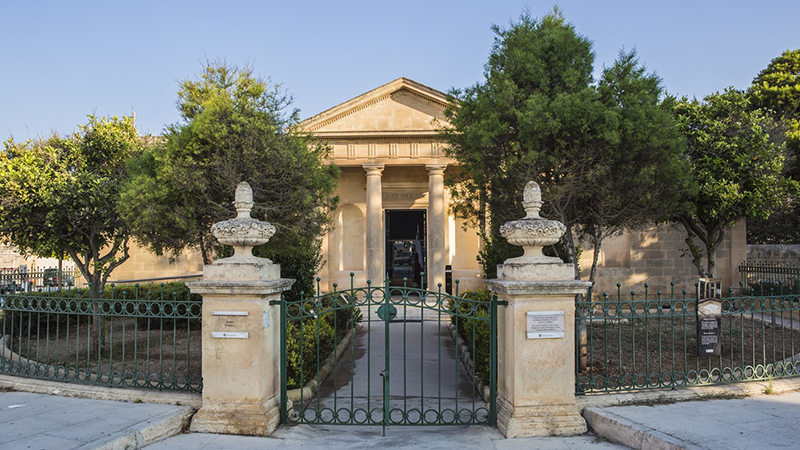
.10
The Roman Villa
If you are one of those who are fascinated by everything and anything from the Roman Empire, the Roman Villa or Domvs Romana will intrigue you. It offers a glimpse into the life of an aristocratic Roman family. It is located in Rabat directly outside the Mdina Ditch. Undoubtedly the most valuable and interesting things to see in the villa are the authentic and well preserved Roman Mosaics.